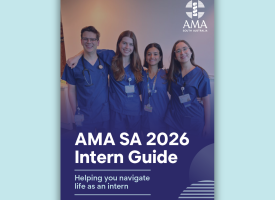ED wait times and surgery waiting lists soar, new data shows
Data out today paints a grim picture of Australia’s public hospitals with nearly one in two patients spending more than the recommended time in emergency departments, while the planned surgery waiting list soars past 850,000 people.

Data out today paints a grim picture of Australia’s public hospitals with nearly one in two patients spending more than the recommended time in emergency departments, while the planned surgery waiting list soars past 850,000 people.
The Australian Institute of Health and Welfare (AIHW) data is further proof that Australia’s public hospitals are struggling more than ever with an under-resourced system in logjam around the country.
The AIHW data shows 44 per cent of patients who presented to EDs spent more than four hours waiting and receiving treatment before either being admitted to hospital or being discharged in 2022–23, a five per cent increase compared to the previous year, and an 11 per cent increase compared to 2021–22.
It was worst in Tasmania, where almost four in five (78 per cent) patients spent more than four hours in EDs before being admitted to hospital. In NSW, it was 75 per cent.
Australian Medical Association President Professor Steve Robson said a lack of capacity in hospitals had led to people waiting years for essential surgery, long waits in EDs and ambulance ramping.
“Australia’s public hospital performance is at its worst since the AMA started tracking the data 20 years ago,” Professor Robson said.
“Public hospitals are inadequately funded and resourced. The outcome is ambulance ramping, patients spending far too long in EDs and a surgery waiting list that is nudging close to one million people.”
The AIHW data reveals a significant uptick in the number of people waiting for surgery. In 2022–23, 855,528 patients were on the surgery waiting list, compared with 787,715 in 2021–22.
“The number of people waiting more than a year for hip and knee replacement surgeries has quadrupled since 2018–19. It’s important to remember that behind each number are real people whose lives are being severely impacted by serious health conditions that require surgery,” Professor Robson said.
“We are seeing more and more Australians die waiting for these essential surgeries, with more than 12,000 deaths in 2022–23, up from 9,000 the year before. While these deaths may not have been because of delayed surgery, it is an alarming increase.”
Professor Robson said major reform to the National Hospital Funding Agreement was needed along with an urgent injection of funds to address immediate issues.
“The AMA continues to call for an immediate urgent injection of funds to address the current logjam and reform to the National Hospital Funding Agreement, including a 50–50 funding split between the states and territories and the federal government, and funding for performance,” he said.



